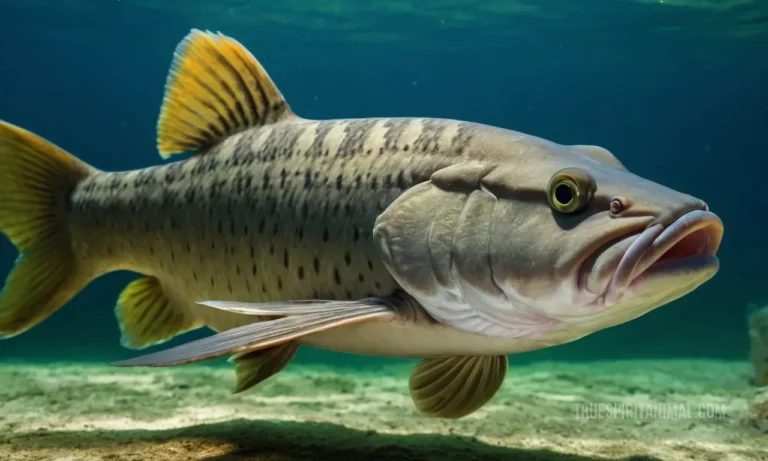Sockeye Salmon Symbolism and Meaning

Sockeye salmon, also known as red or blueback salmon, is a species of Pacific salmon that has long been revered for its strength, resilience, and beauty. Native to the Pacific Northwest region of North America, these fish are not only an important food source but also hold deep cultural significance for many Indigenous peoples in the area. The sockeye salmon’s journey from sea to river and back again is a powerful symbol of life, death, and rebirth. In this article, we will explore the various meanings and symbols associated with these magnificent creatures and how they have been incorporated into art, mythology, and spiritual practices.
The Journey of Life and Death
Sockeye salmon are known for their incredible journey from the ocean to freshwater rivers to spawn and lay eggs before dying. This life cycle is a powerful symbol of the circle of life, representing the inevitability of death as part of the natural order. They swim thousands of miles upstream against strong currents and obstacles, often facing predators and harsh conditions, only to return to their birthplace to reproduce and die. Their journey reflects the human experience of overcoming challenges and embracing the cycle of life and death. The salmon’s determination and courage inspire many cultures to view them as a symbol of resilience and perseverance. In Native American mythology, they are often seen as messengers between the living world and the spirit world, carrying prayers and offerings from humans to their ancestors.
Symbolism in Art
Sockeye salmon have been featured in various forms of art, including totem poles, jewelry, and tattoos. The intricate designs on totem poles depict the salmon’s journey, showcasing its strength and determination. Native American tribes like the Tlingit and Haida people of Alaska and British Columbia use these symbols to represent their connection to the land and sea. Salmon are often depicted with human-like features, emphasizing their importance in their culture. The fish is also a common theme in Northwest Coast Native American art, symbolizing abundance and fertility. Their vibrant colors and striking appearance make them an ideal subject for artists who wish to capture the essence of nature’s beauty.
Sockeye Salmon in Mythology
In many Indigenous cultures, salmon are considered sacred creatures with spiritual significance. In Tlingit mythology, the salmon is believed to be a transformer figure that brought light to the world and taught humans how to fish. The Haida people believe that Raven, a trickster character, created salmon from cedar bark and water, making them a symbol of creation. Salmon are also central to the Kwakwaka’wakw culture, where they represent wealth and prosperity. In some stories, they are associated with the sun and moon, emphasizing their importance in sustaining life.
Sockeye Salmon as a Food Source
Sockeye salmon is a vital food source for many Indigenous communities. They provide nourishment and sustainability, symbolizing abundance and prosperity. The fish’s nutritious qualities make them an essential part of traditional diets, reinforcing their importance in the cultural identity of these tribes. Salmon ceremonies are held to honor the salmon and ensure a bountiful harvest for future generations.
Sockeye Salmon as a Symbol of Strength and Resilience
The sockeye’s journey from sea to river is a powerful metaphor for overcoming adversity. Their strength and determination inspire many, symbolizing the human spirit’s ability to face challenges and persevere. They are seen as a reminder that even in death, life continues through their offspring. The salmon’s struggle against the current represents resilience and adaptability, making them an emblem of survival and endurance.
Sockeye Salmon in Spiritual Practices
Salmon ceremonies are held by Indigenous tribes to honor these creatures and ensure a successful return each year. They believe that respecting and honoring the salmon ensures their continued presence in the ecosystem. Prayers, songs, and dances are performed during these rituals, emphasizing gratitude for the fish’s sacrifice. The salmon’s life cycle is seen as a reminder of the interconnectedness between humans and nature.
Sockeye Salmon in Modern Culture
Sockeye salmon continue to hold cultural significance today. Many tribes still practice traditional fishing methods, preserving their connection with the land and sea. Their symbolism remains relevant in contemporary art, literature, and environmental activism. The fish’s resilience is celebrated through events like the Sockeye Salmon Festival in Alaska, which promotes conservation efforts.
Conclusion
Sockeye salmon are more than just a food source; they represent life, death, and rebirth. Their journey from sea to river is an inspiring tale of resilience and determination. As a symbol of strength and perseverance, they remind us of our connection with nature and the importance of respecting natural resources. The salmon’s spiritual significance transcends time and culture, reminding us of our responsibility towards the environment.





